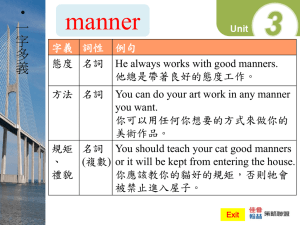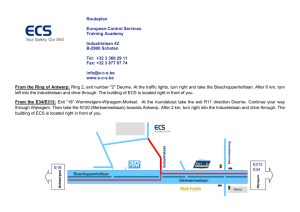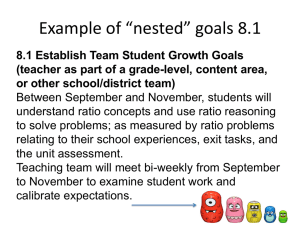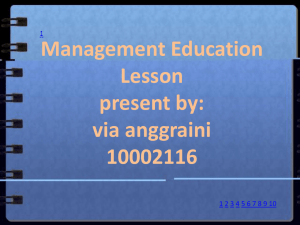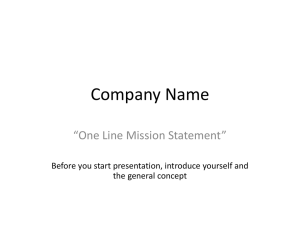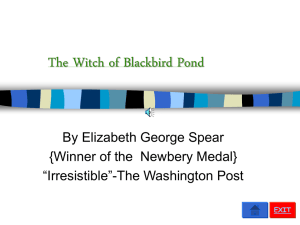Formative Assessment - differentiatingschoolsandclassrooms
advertisement
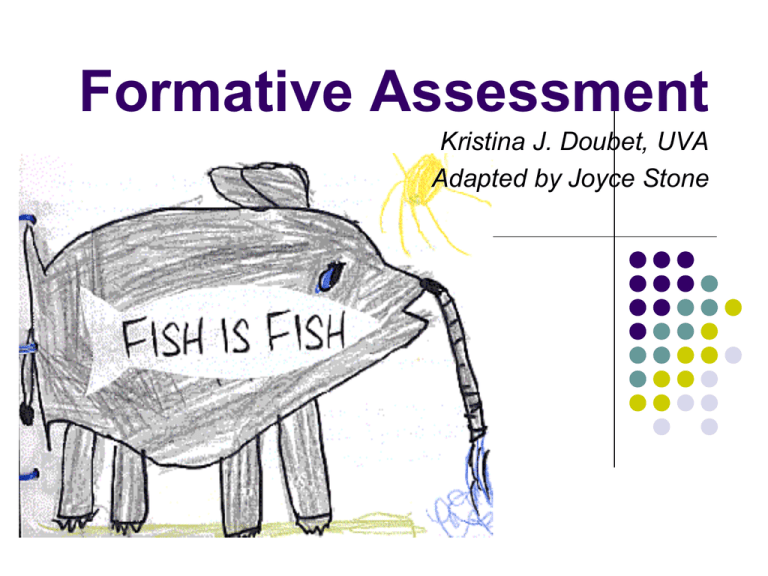
Formative Assessment Kristina J. Doubet, UVA Adapted by Joyce Stone Formative assessment is also referred to as on-going assessment. As you explore formative assessment, try this…. Table Talk Activity Work Alone / Work Together Alone: Think back over your previous learning experiences, in or outside of school. Identify the best feedback system you ever encountered. What were the characteristics of the feedback that made it so effective? Together: Share with your tablemates your previous learning experience that incorporated the best feedback system you ever encountered. As a table, create a list of generalizations that finish the prompt, “The best feedback systems…” Pre-Assessment Administer during previous class period for most comprehensive information. Keep the diagnostic in nature in mind. Include some “tricky” questions to see who’s really got it. Results: Group students by readiness as indicated above. Group A – Firm grasp of definitions and use/application Group B – Firm grasp of definitions but struggled with application Group C – Struggled with both definitions and application Ongoing Formative Assessments Why must I discover where students are in relationship to my curriculum and learning goals. Easy Strategy for Assessing Student Understanding… EXIT CARDS EXIT CARDS Exit Cards are used to gather information on student readiness levels, interests, and/or learning profiles. The teacher hands out index cards to students at the end of an instructional sequence or class period. The teacher asks the students to respond to a pre-determined prompt on their index cards and then turn them in as they leave the classroom or transition to another activity. The teacher reviews the student responses and separates the cards into groups depending on the anticipated need for differentiation. Exit Cards: Science Name: Draw the earth’s orbit around the sun. Briefly explain what causes the seasons. Use illustrations, if necessary. How have your opinions about this topic changed? What questions do you still have about”? Exit Cards: Perspective Name: Define “perspective.” Explain the varied “perspectives” in To Kill a Mockingbird. Can you think of another context in which you have studied perspective? Exit Cards: History Name: Name 3 factors that contributed to the United States’ involvement in Vietnam. Briefly explain what you believe to be the most significant of these factors and why? Exit Cards: Algebra Name: Draw a graph & label the “x” and “y” axes Graph a line with the endpoints (3,5) (7,2) Graph a line with the endpoints (-3,-5) (7,2) Provide two ways of writing the equation for a line Exit Cards: Spanish Name: Write the endings for regular –er verbs: List three regular –er verbs that you know of: What questions about –er verbs do you still have? 3-2-1 Cards Name: 3 things I learned today about….. 2 questions I still have/ am confused about….. 1 thing I would like to learn more about….. Another Alternative…. ENTRY CARDS Explain a Key Idea/Concept ENTRY CARD Name: ____________ Period:_____ What is a ……………. Give at least two examples of ……………. Explain why we………….. Frayer Diagrams TOPIC or CONCEPT DEFINE IT LIST EXAMPLES GIVE IMPORTANCE LIST NON-EXAMPLES You can change the category titles to suit your instructional needs. Social Studies Example Political System: Totalitarianism DEFINE IT IDENTIFY EXAMPLES IMPORTANCE LIST NON-EXAMPLES Character Traits in Literature POWER Where Do you have it? Characters in the book who had it: Where do you lack it? Characters in the book who lacked it: Matrix: Like and Unlike In each square, list something that the leader in the two coordinate boxes share that the other two leaders do not. Where a person intersects with him/herself, you must list something unique to only him/her. Jefferson FDR Kennedy G.W. Bush Something else JFK and Jefferson share that FDR and Bush don’t Jefferson FDR Kennedy G.W. Bush Something JFK and Jefferson share that FDR and Bush don’t Something unique to Bush Think-Pair-Share Art by Holly Hertberg Windshield Check CLEAR – “I get it!” BUGS – “I get it for the most part, but I still have a few questions.” MUD – “I still don’t get it.” Alternative Method: Thumbs-up/Wiggle palms/Thumbs down Graffiti Wall Similar to “Four Walls” (remember – “Mooove!”) Students move in small groups to respond to different questions with new material. Great way to pre-assess and end activities Another Option – “Roundtable” One pencil and piece of paper per small group Group members write one idea and pass; no talking, but may pantomime Help Cards/Stations In one study, high school students attributed increased success to an atmosphere which encouraged students to ask for help, as well as opportunities to do so. Help cards – hold up at designated times, or as needed “Self-Help Groups” – Students self select to hear info another way or to work with a new application Which methods of formative assessment have you experienced? Think Tank Which would you like to try?


